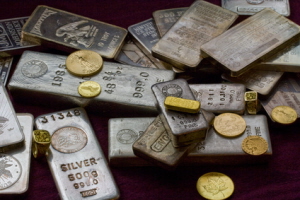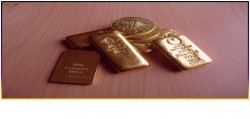Ralph Nelson Elliott began studying 75 years of stock market data in the 1930s. Elliott’s thorough research uncovered that stock markets don’t actually behave in a chaotic matter, but instead rotate through repetitive cycles of highs and lows. Elliott dubbed the upward and downward swings “waves,” hence the name: The Elliott Wave Theory.
In addition to the stock market, the Elliott Wave Theory can also be applied to gold trading and the Forex market. Once you understand the Elliott Wave Theory, you will develop instincts for entry and exit points and stop loss settings. Here’s how to trade gold using the Elliott Wave Theory:
Fractals
Elliott Waves are “fractals.” The term fractals comes from mathematics, and describes an object that can be divided into smaller parts that are a very similar copy of the initial object. In maths, this resemblance is known as “self-similarity.” This means that within a smaller scale wave (over hours or days), you will see a similarity to its larger scale wave (over weeks or months).
The Cardinal Rules
Trading has many cardinal rules that apply in every situation, and the Elliott Wave Theory is no exception. There are three cardinal rules to follow when labelling waves:
- Cardinal Rule #1. The thirdwave can NEVER be the shortest impulse wave.
- Cardinal Rule #2. The second wave can NEVER extend beyond the start of the first wave.
- Cardinal Rule #3. The fourth wave can NEVER never cross in the same price area as the first wave.
Impulse Waves
A trending market starts with a five-wave impulse wave. It starts with the first wave. A small group of people identify it as a cheap pairing and buy it up. The price rises. In the second wave, some of those initial buyers are happy with the price rise, so they cash out with their profits. As a result, the pairing price drops, but not too low. By the third wave, the pairing is starting to be noticed by the masses, who want in. The price starts to rise and rise, often beyond the height of the first wave. In the fourth wave, many people are happy to sell off, but the dip is small because others are still bullish. Finally, we reach the fifth wave. Everyone knows about the pairing, people are buying like crazy, to the point it even becomes overpriced.
Corrective Waves
Corrective waves are three-wave patterns that always follow impulse waves. There are three common types of corrective waves. Zig-zag formations have steep price moves that counter the predominant trend. Flats are just sideways corrective waves that are usually (but not always) equal in length. Finally, triangle formations are bound by converging or diverging trend lines.
Now you know how to identify impulse and corrective waves. All you need to do is figure out the current wave of a currency pairing, and then you’ll know whether to enter or exit the market. The Elliott Wave Theory is a useful strategy that explains how to trade gold on the Forex market.






